Q&A: The Looming 2025 Tax Challenge
Visit Manufacturing Wins
VISITThe NAM recently launched “Manufacturing Wins,” the manufacturing industry’s campaign to preserve the benefits of the 2017 tax reforms that are currently scheduled to disappear in 2025—particularly those tax incentives that make it easier for small manufacturers to hire employees and raise wages, invest in equipment, grow their businesses and contribute more to their communities.
NAM Vice President of Domestic Policy Charles Crain explains what’s at stake in 2025 and how manufacturers can get involved in the effort to prevent tax increases.
Q: Manufacturers are facing “tax Armageddon” at the end of 2025. Can you explain what’s happening?
Crain: Tax reform in 2017 was rocket fuel for manufacturers, leading to record job creation, capital investment and economic growth. For example, manufacturing production grew 2.7% in 2018, with December 2018 being the best month for manufacturing output since May 2008. Manufacturing capital spending grew 4.5% and 5.7% in 2018 and 2019, respectively—this shows the direct impact of pro-growth tax incentives on manufacturers investing in new equipment and facilities. But many of tax reform’s pro-manufacturing provisions will expire at the end of 2025. If these provisions are allowed to expire, virtually every manufacturer will face devastating tax increases.
Q: What policies will sunset in 2025, and how will their expiration impact SMMs?
Crain: For small manufacturers organized as pass-throughs—meaning the business’s owners pay tax on the business’s income on their personal returns—two key changes are coming down the pike. First, their tax rate will increase, from 37% to 39.6%. Second, they will lose the pass-through deduction, which provides a tax deduction equal to 20% of the business’s income. In combination, these tax hikes will increase pass-throughs’ effective tax rate by at least 10 percentage points (from 29.6% to 39.6%), resulting in significantly less capital available for equipment purchases, job creation and community investment.
For small manufacturers organized as corporations, the NAM is fighting to prevent any increases in the corporate tax rate. The corporate rate decreased from 35% to 21% in 2017 and is not scheduled to expire—but President Joe Biden has proposed increasing the rate to 28%. The NAM remains staunchly opposed to corporate tax rate increases that punish manufacturers for investing and creating jobs here in America.
For family-owned small manufacturers, their estate tax obligations are scheduled to increase. Tax reform doubled the value of assets that can be passed on without incurring the estate tax; at the end of 2025, the estate tax exemption threshold is scheduled to be reduced by half. The NAM is calling on Congress to maintain the increased exemption—or to repeal the estate tax entirely, preventing family-owned businesses from being sold for parts to pay a tax bill when a loved one passes away.
Q: What else is at stake in 2025?
Crain: Manufacturers of all sizes continue to face uncertainty about the tax code’s treatment of R&D expenses, capital equipment purchases and interest on business loans. Immediate R&D expensing—which allows manufacturers to write off the entire cost of R&D spending in the year incurred—expired in 2022. So did a tax reform provision that allowed businesses to deduct more of the interest they pay on loans when they debt finance a project. And in 2023, 100% accelerated depreciation—which reduces the cost of capital equipment purchases—began to phase down. These expired provisions are vital to manufacturing growth, and the NAM is working to restore and extend them as Congress prepares for the 2025 tax fight.
Q: How can SMMs learn more?
Crain: The NAM recently published “What’s At Stake: Manufacturers Face Devastating Tax Increases in 2025,” which highlights the tax reform provisions that will expire at the end of 2025. The NAM calls on Congress to act to prevent these expirations from stunting manufacturing job creation, growth and innovation.
Q: How can SMMs get involved?
Crain: Manufacturing voices are crucial to the 2025 tax fight. NAM members with a story to tell about the impact of 2017 tax reform on their business—or the damage that the 2025 expirations could inflict—are encouraged to reach out to their NAM membership advisor or to the NAM tax team.
You can also take a few minutes to record a video testimonial calling on Congress to prevent devastating tax hikes on manufacturers. Instructions for submitting a video testimonial are available here—it’s as easy as having a coworker use a smartphone to film a video of you on your shop floor! Completed testimonials can be emailed to the Manufacturing Wins team to be posted to our campaign site: NAM.org/MfgWins
NAM, Allies to Biden: Intervene in Port Talks Now
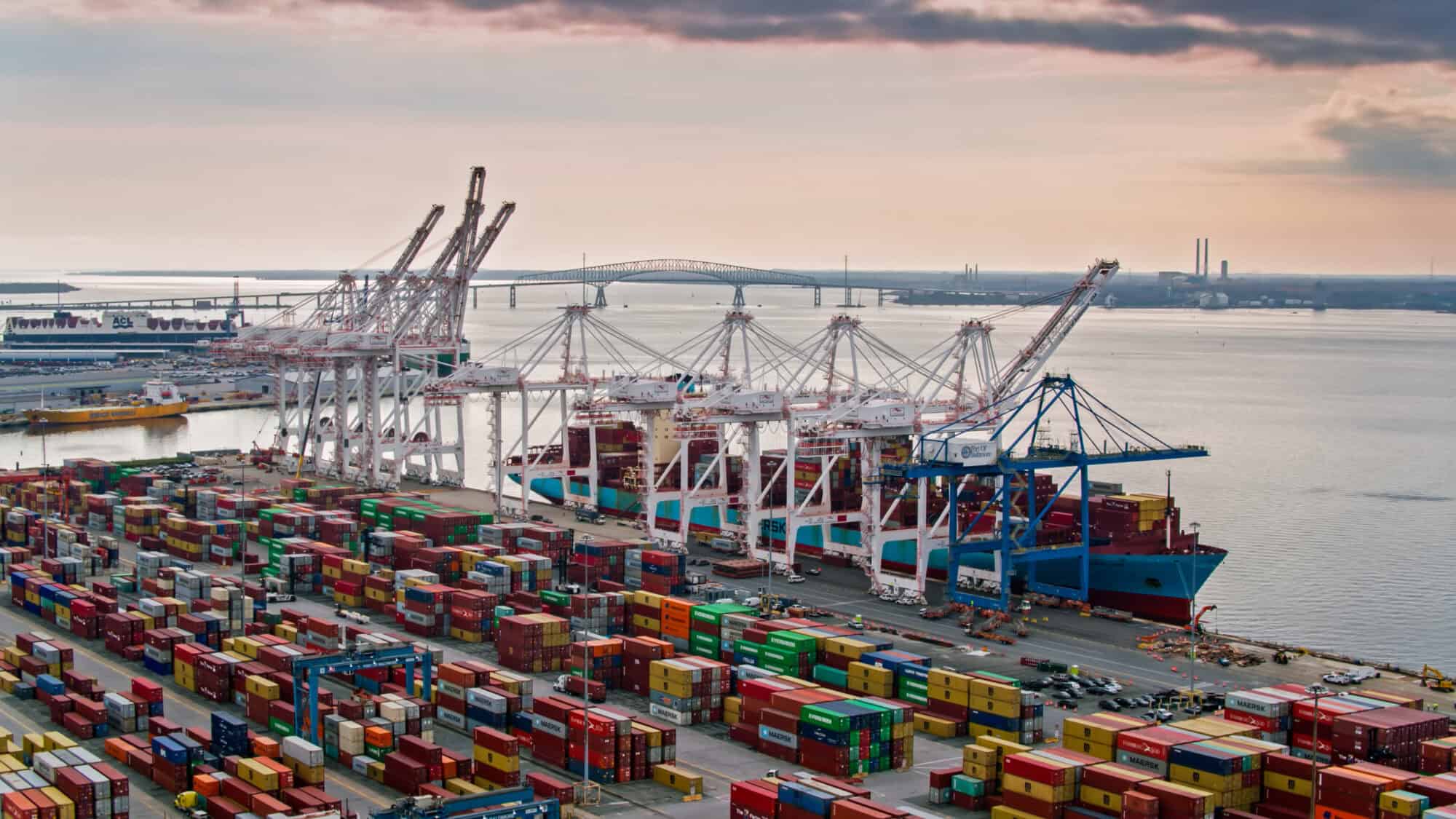
A labor strike on the U.S. East and Gulf Coast strike would have dire consequences for the maritime supply chain, the NAM and partner organizations told the Biden administration this week—which is why it’s vital the administration intervene now to restart stalled labor negotiations between dockworkers and an alliance of port operators and ocean carriers.
What’s going on: “Earlier this month, contract negotiations broke down between the International Longshoremen’s Association and the US Maritime Alliance,” Bloomberg Government (subscription) reports. “The current agreement, which covers about 45,000 dockworkers at facilities including six of the 10 busiest US ports, expires Sept. 30.”
- The NAM and more than 150 other industry organizations on Wednesday urged the administration to “immediately work with both parties to resume contract negotiations and ensure there is no disruption to port operations and cargo fluidity.”
Why it’s important: Other global shipping-related setbacks and threats mean the U.S. cannot withstand another challenge, the groups said. Continued Houthi terrorist attacks on commercial ships in the Middle East have resulted in “congestion and lack of equipment at overseas ports, carrier capacity issues as they continue to divert vessels away from the Red Sea and increased freight rates.”
Precedent set: Last September, after 14 months of negotiations and several work stoppages and walkouts, West Coast dockworkers reached a labor agreement with the Pacific Maritime Association—following NAM-urged intervention by the Biden administration.
- “We witnessed a significant shift of cargo from the West Coast to the East Coast and Gulf Coast ports because of the challenges and uncertainty during the last West Coast port labor negotiations,” said the groups. “While much of that business has remained at the East Coast and Gulf Coast ports, we are starting to see a shift back to West Coast gateways, where a long-term contract is in place, especially as we enter the busy peak shipping season.”
NAM to Tax Teams: Preserve Tax Provisions Before They Expire
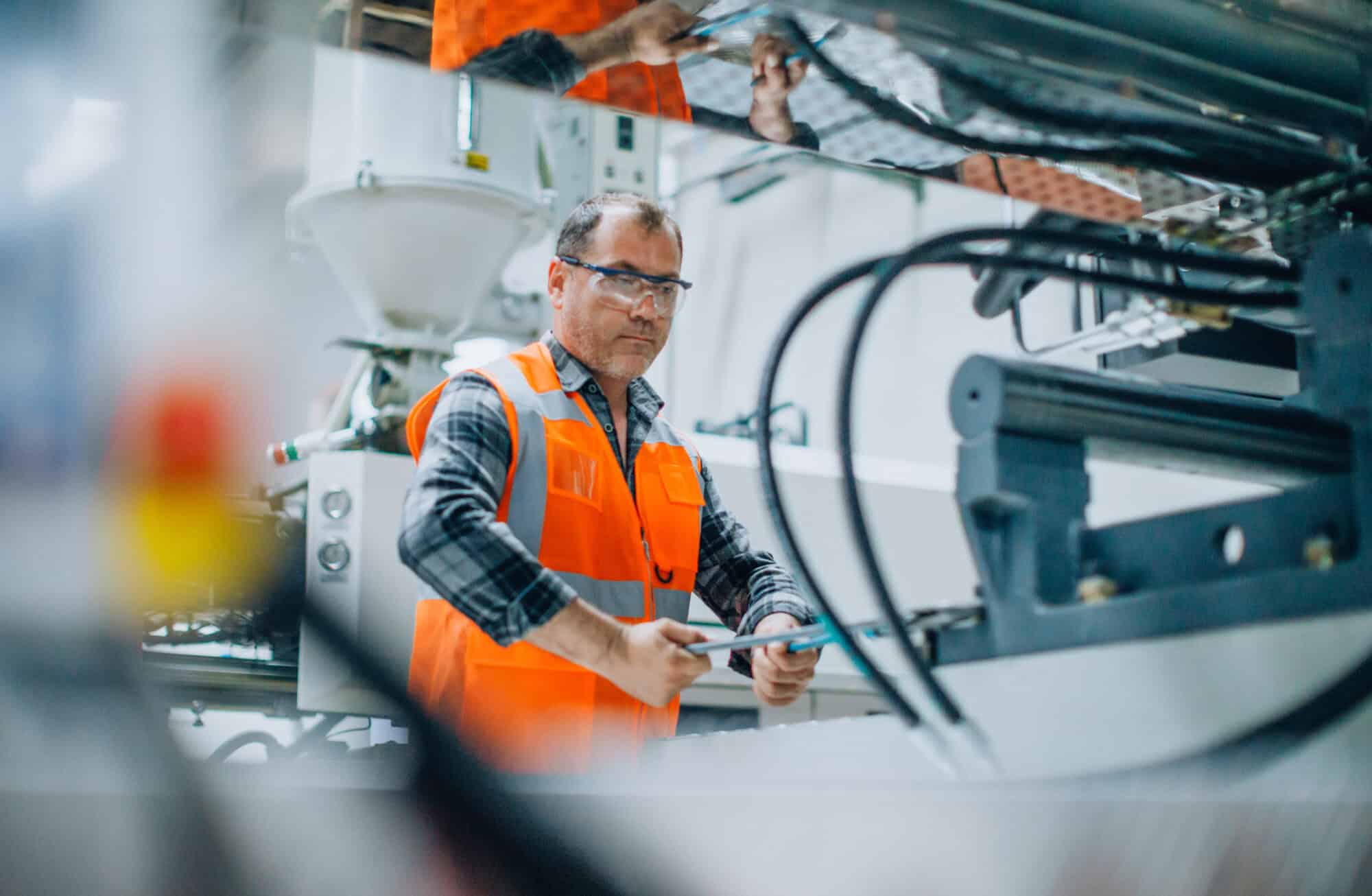
Raising taxes on manufacturers would damage the industry and the U.S. economy as a whole, the NAM told the House Ways and Means Committee this week. That’s why it’s crucial that Congress preserve set-to-expire tax reform provisions.
What’s going on: In a continuation of its Manufacturing Wins campaign, the NAM conveyed a clear message to six of the committee’s specialized “Tax Teams”: act now to protect manufacturers from tax increases.
Why it’s important: Failure to act before the end of next year, when key provisions from 2017 tax reform are set to expire, would result in higher taxes on virtually all manufacturers—which “will cost millions of jobs and put the American manufacturing sector at a severe disadvantage globally,” the NAM wrote.
What’s at stake: The NAM highlighted manufacturers’ top tax priorities for the Tax Teams, discussing why preserving pro-growth tax policy is vital for manufacturers in the United States:
- In communication with the Main Street Tax Team, the NAM called on Congress to preserve tax reform’s reduced individual income tax rates and maintain the 20% pass-through deduction. It emphasized for the Supply Chain Tax Team the importance of tax reform’s reduction in the corporate tax rate, which brought the U.S. from one of the highest rates in the world to a globally competitive 21%. The Global Competitiveness Tax Team received a similar message.
- The NAM detailed for the Rural America Tax Team the damage the estate tax imposes on family-owned manufacturers, and why Congress should not allow more family-owned businesses’ assets to be subject to the estate tax at the end of 2025.
- The NAM continued to push for pro-growth, pro-innovation R&D tax incentives with the U.S. Innovation Tax Team, and it enumerated for the Manufacturing Tax Team the full range of policies that will impact manufacturers at the end of 2025—and called for urgent congressional action to protect manufacturers from tax hikes.
The final word: “Manufacturers of all sizes, throughout the supply chain, are calling on Congress to preserve tax reform in its entirety,” said NAM Vice President of Domestic Policy Charles Crain. “Manufacturers and manufacturing families simply cannot afford the devastating tax increases scheduled for the end of 2025 if Congress fails to act.”
Manufacturers Score Victory on Proxy Firms

The NAM achieved a significant victory in court Wednesday in a case that sought to bring needed oversight to proxy advisory firms—and, more broadly, to ensure regulatory certainty for manufacturers.
The background: Proxy firms make recommendations regarding the way shareholders should vote on proxy ballot proposals that come before public companies.
- These firms operate with minimal oversight despite their outsized influence and even though their decisions can have significant and sometimes harmful impacts.
The fight: In 2020, the Securities and Exchange Commission finalized an NAM-backed rule that included a range of modest but critical reforms to proxy firms’ business models.
- In particular, the 2020 rule ensured that companies had more information about the firms’ voting recommendations and provided investors with companies’ responses to those recommendations.
- But in 2022, the SEC rescinded critical portions of that rule.
- The NAM sued the SEC, asking the U.S. Court of Appeals for the Fifth Circuit to strike down this arbitrary and capricious agency action.
The victory: This week—in news covered by Reuters, POLITICO Pro (subscription), Law360 (subscription), Pensions & Investments (subscription) and Bloomberg (subscription)—the Fifth Circuit ruled in the NAM’s favor, deciding that the SEC acted unlawfully in rescinding the 2020 rule. In particular, the court made two critical points:
- The court held that the SEC’s stated justification for its decisions to rescind NAM-supported proxy firm reforms didn’t pass muster and called the agency’s reasoning “facially irrational” and not “reasonable [or] reasonably explained.”
- The court also ruled that a government agency reversing course despite no change in its underlying factual findings must “explain its about-face” by “giv[ing] a more detailed explanation” than the SEC provided.
- This ruling builds on existing case law that prevents agencies from arbitrarily reversing policies after administrations change, thus encouraging regulatory certainty for manufacturers.
Our take: “This decision confirms that federal agencies are bound by the rule of law, even as administrations change,” said NAM Chief Legal Officer Linda Kelly.
- “Manufacturers depend on the SEC to be a steady regulatory hand at the wheel of America’s world-leading capital markets—an obligation the agency abandoned in rescinding the commonsense, compromise 2020 proxy advisory firm rule. … We will continue to fight in court to uphold the 2020 rule—and to work with the SEC and with Congress to ensure appropriate oversight of these powerful actors.”
Hillenbrand: Sustainability Drives Innovation, Value
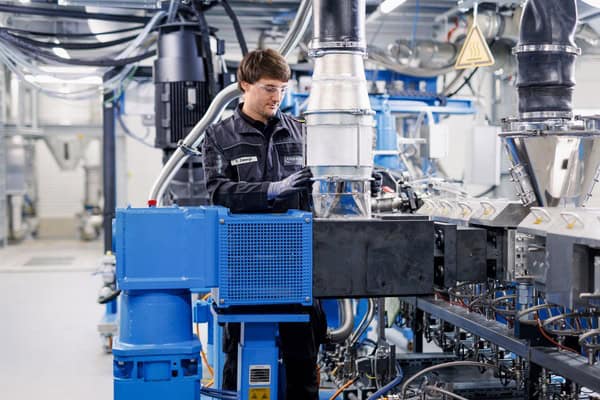
Manufacturers across the U.S. strive to make their operations more sustainable. Many are also laser-focused on the equipment they produce and how it can support their customers’ sustainability endeavors.
At Hillenbrand—a global industrial company that provides highly engineered, mission-critical processing equipment and solutions for markets including durable plastics, food and recycling—sustainability is at the core of everything it does.
The intention: Hillenbrand President and CEO Kim Ryan shared that the company doesn’t have a stand-alone sustainability strategy, but rather has made sustainability “the way we do business.”
- Hillenbrand is a signatory to the United Nations’ Global Compact, Convention Against Corruption and Women’s Empowerment Principles.
- “Our sustainability journey is guided by our purpose, ‘Shape What Matters For Tomorrow,’ which was collectively established and is embraced by all Hillenbrand associates,” Ryan said. “Our recently released 2023 Sustainability Report demonstrates our continued commitment to this goal as it shows our progress and focuses on our industrial products that positively impact the world around us.”
The progress: Highlights of the 2023 report include a focus on product innovation, continued transparency through additional data related to key environmental metrics such as water and waste, and disclosure of three years of Scope 1 and Scope 2 greenhouse gas emissions data. They also include 15 Scope 3 categories.
- “With the release of our fifth annual sustainability report, our journey continues to evolve and improve,” Ryan continued. “‘Make It Matter’ is a core value at Hillenbrand, and we’re committed to seeking out innovative solutions that push us toward a more sustainable future.”
The angle: The company’s success in sustainability is driven by its leaders, who ensure that the value is deeply ingrained in day-to-day operations.
- “Secular and global macroeconomic trends are now driving the need to adapt and engage associates, customers and stakeholders more than ever,” Ryan told us. “Taking into account these trends allows us to continue working toward a more sustainable future by providing innovative solutions.”
The value: Ryan sees Hillenbrand’s sustainability efforts—which the company sees as being supported by the three pillars of people, products and partnerships–as a value add for everyone.
- For example, by designing more-efficient systems that produce more sustainable products, Hillenbrand is committed to creating industrial solutions that have a positive impact on the world.
- Whether it’s helping customers reduce energy emissions or using Hillenbrand’s technology to produce more sustainable packaging, customers can reap the benefits of this commitment.
- “For us, there has been great value,” Ryan concluded. “If you approach this as a cost center, that is what it’s going to be for you. If you approach this as something that could actually create value for you and your customers, then I believe that’s what it has the opportunity to become.”
Further reading: Learn more about Hillenbrand’s commitment to sustainability here.
In Search for Workers, One Manufacturer Pulls Out the Stops
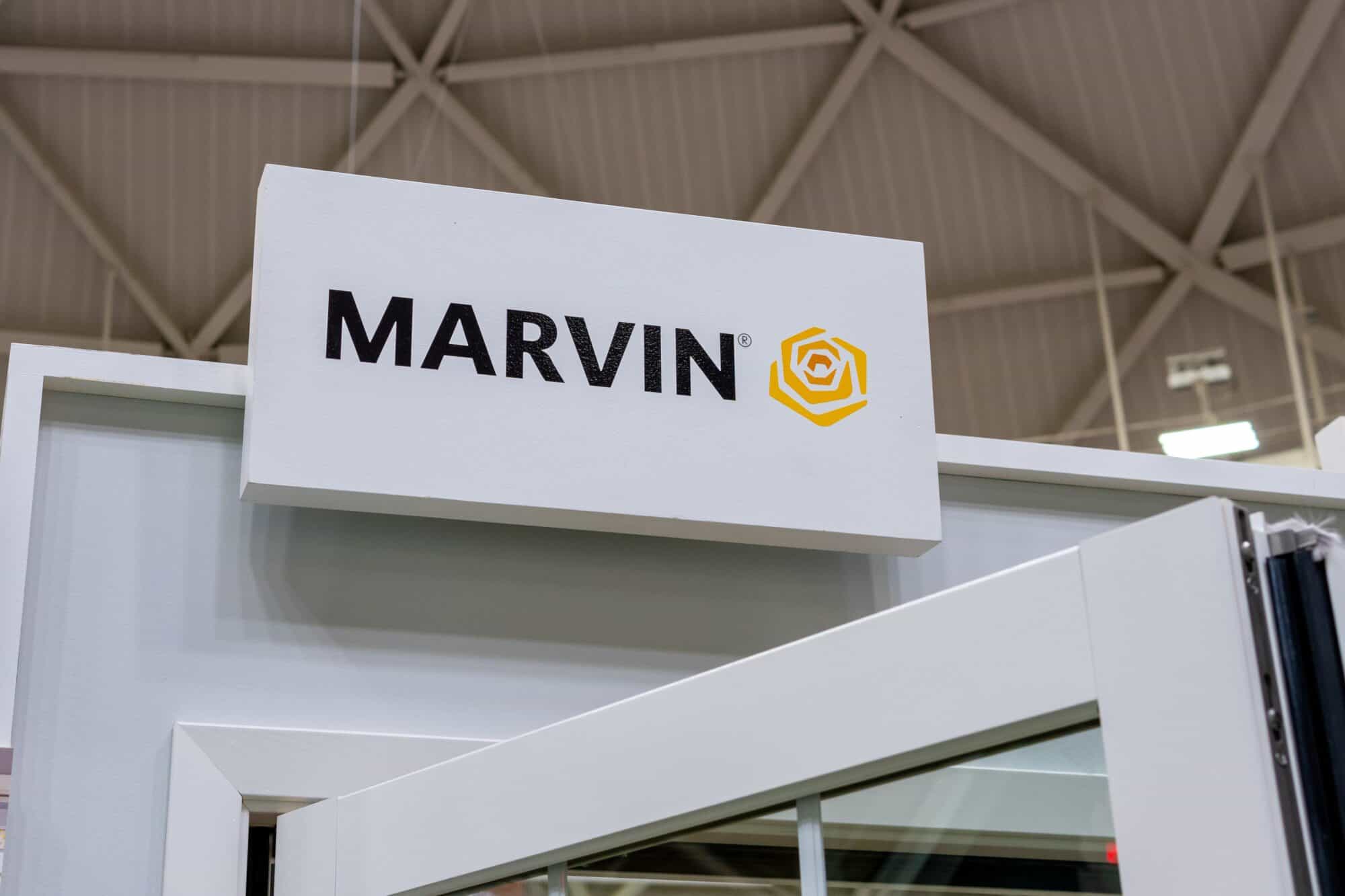
Marvin, a window and door manufacturer based in Warroad, Minnesota, is looking thousands of miles south to fill job openings (The Wall Street Journal, subscription).
What’s going on: Marvin employs about 700 people at its Warroad location. With older-generation workers retiring at the rate of about one employee a week and a town population that hasn’t grown in decades, the company “came up with a recruitment plan called ‘The Path North,’ which aims to find workers in Puerto Rico and Florida willing to uproot their families and settle in a cold northern town”—but it’s proving a difficult sell, even with generous relocation bonuses and temporary housing.
- Unemployment in Puerto Rico and Florida is low, so Marvin is fishing for talent in relatively sparsely populated ponds.
- Of the 115 workers who came from Puerto Rico in the past eight or nine months, just 63 remain at the company.
- Marvin has 10 other locations throughout North America.
Why it’s important: Marvin’s challenge is emblematic of “manufacturing in America today. The U.S. population is barely growing, baby boomers are exiting the workforce,” many young people are unaware of the many advantages of working in manufacturing and “[t]here is little political will for lasting immigration reform that could fill workforce gaps.”
- If current trends continue, the U.S. will have 2.1 million open manufacturing positions by 2030, according to a joint study by Deloitte and the Manufacturing Institute, the NAM’s 501(c)3 workforce development and education affiliate.
Well worth it: Still, for those who come to Marvin, the rewards are significant.
- The company helps employees find permanent housing and is even an investor in a local apartment complex.
- There is job security, too. When orders slowed at one of its factories a few years ago, the company offered cash bonuses to employees willing to relocate to Warroad.
- Marvin has also helped Warroad schools hire Spanish-language translators to assist the children of new hires.
The final say: “Tapping into new talent pools is especially critical in rural areas, whether it’s done via relocation support, engaging second chance populations or participating in initiatives such as the Manufacturing Institute’s Heroes MAKE America program, which is building connections between the military community and the manufacturing industry by bringing in new workers,” said MI President and Executive Director Carolyn Lee. “We need to engage all talent pools to fill the 500,000 jobs in manufacturing today.”
NYT Investigation: Pharmacy Benefit Managers Drive Up Costs for Employers

Although they were created to keep prescription drug prices down, pharmacy benefit managers “frequently do the opposite” (The New York Times, subscription)—and that’s one of the main reasons the NAM has long advocated for their reform.
What’s going on: “The job of the P.B.M.s is to reduce drug costs. Instead, they …
steer patients toward pricier drugs, charge steep markups on what would otherwise be inexpensive medicines and extract billions of dollars in hidden fees, a New York Times investigation found.”
Why it’s important: PBMs frequently charge employers and government programs, such as Medicare, many times the wholesale cost of a medication and keep the difference, according to the Times.
- And it’s not just those taking prescriptions who pay; when drug costs are inflated, everyone ends up paying higher insurance premiums.
- What’s more, “[b]ecause of recent mergers, [the big three PBMs] are becoming more dominant, collectively processing roughly 80 percent of prescriptions in the United States.” That’s up more than 30% from just 12 years ago.
Working around a workaround: In 2018, in response to growing pressure from employers to get PBMs to share more of the discounts from drug manufacturers, PBMs set up entities known as group purchasing organizations.
- These GPOs pass savings to employers—but they “also began imposing new fees on drug manufacturers,” money they were not contractually bound to pass on to clients.
- The result: “Employers are none the wiser. They receive rebates. But they can’t see the billions of dollars in fees that the G.P.O.s take for themselves.”
Congress makes moves: Since the beginning of last year, seven House and Senate committees have passed PBM-reform legislation, including policies to increase transparency into PBMs’ business practices, delink PBM compensation from medications’ list prices and ensure that rebates are fully passed through to the plan sponsor or patient.
- The NAM has been crucial in educating lawmakers on the need for these reforms and continues to advocate for PBM reform to be signed into law this year.
The last word: “PBMs drive up health care costs for manufacturers and manufacturing workers,” said NAM Vice President of Domestic Policy Charles Crain. “Congress must act as soon as possible to enact comprehensive PBM reform that benefits employers by making PBM contracts more straightforward, transparent and predictable—and benefits workers by reducing the prices they pay out of pocket for their prescriptions.”
Manufacturing in 2030: The Opportunity and Challenge of Manufacturing Data
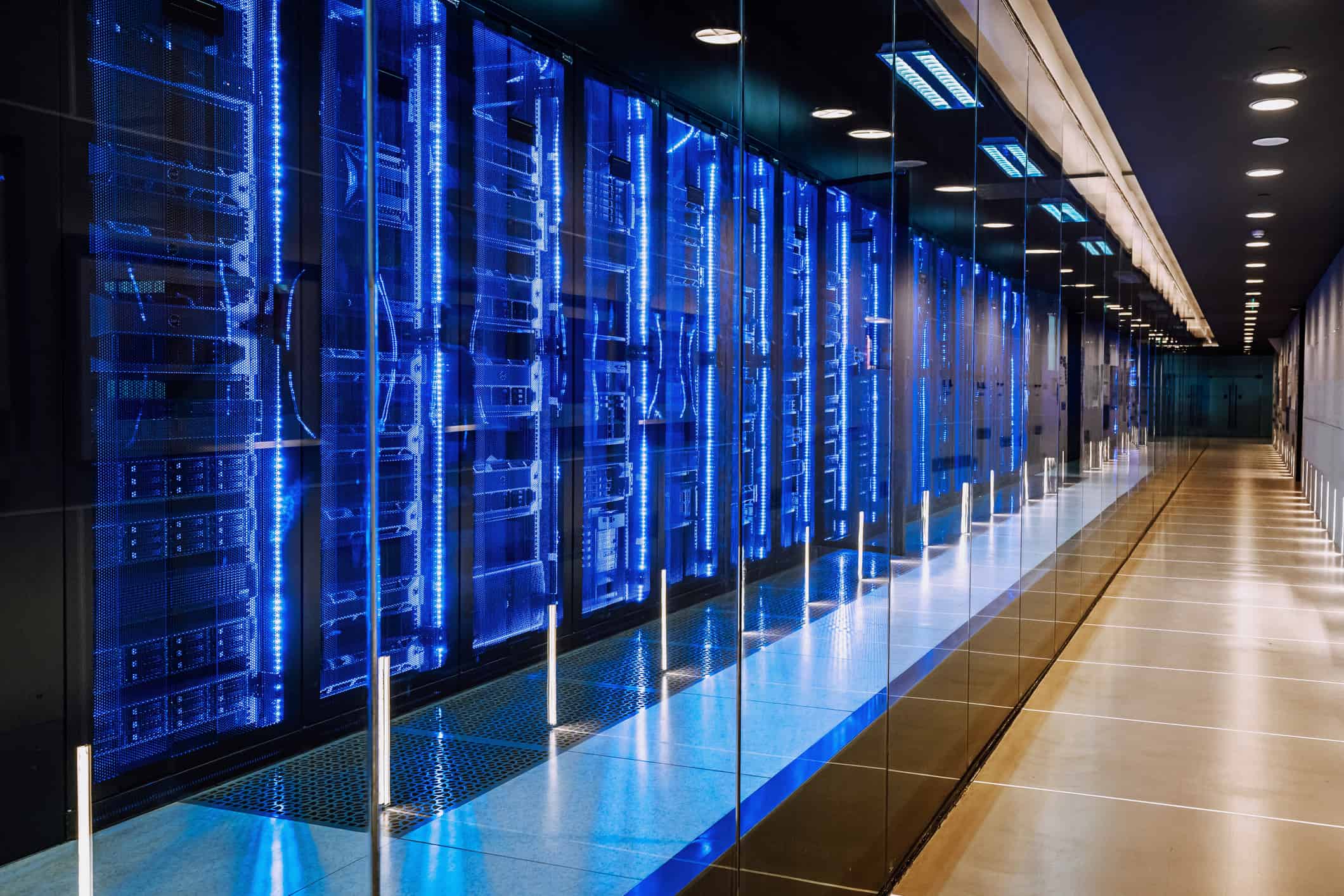
As manufacturers move toward building smarter factories with connected machines, the data those systems produce can offer a host of benefits: improved efficiency, better productivity, informed decision-making, value creation and, ultimately, competitiveness. Yet becoming a data-driven business comes with its share of challenges. In this year’s Manufacturing in 2030 Survey, Data Mastery: A Key to Industrial Competitiveness, the NAM’s Manufacturing Leadership Council sheds light on the successes and opportunities for how manufacturers are transforming their operations with data.
Security and privacy concerns: As factories become more connected, cybersecurity becomes a greater imperative. For this reason, survey respondents validated that both data security and data privacy are essential.
- More than 90% of respondents have a formal or partial policy on data security and data privacy.
- About two-thirds of manufacturers have a formal or partial policy on data quality.
- More than 60% have a corporate-wide plan, strategy or guidelines for data management, but only 15% follow the plan in its entirety.
How data is used: As manufacturers advance along their M4.0 journey, data is becoming their lifeblood, driving insights and decision-making. Yet the survey revealed a gap between available data sources and their utilization, a notable area for improvement as the industry looks toward the future.
- Spreadsheets are still king: 70% of manufacturers enter data to them manually, and 68% still use them to analyze data.
- 44% of manufacturing leaders say the amount of data they collect is double what it was two years ago, and they anticipate it will triple by 2030.
- While nearly 60% of manufacturers use data to understand and optimize projects, there is a shift toward using data to make predictions about operational performance, including machine performance, in the next decade.
Business impact: Most manufacturers leverage data to find ways to save money or promote business growth. However, less than half have a good understanding of the dollar value of their data.
- Only about 25% of manufacturers have high confidence that the right data is being collected.
- Most manufactures have only moderate confidence in their analytic capabilities.
- Top challenges include data that comes from different systems or in different formats (53%), data that is not easy to access (28%) and lack of skills to analyze data effectively (28%).
- However, despite those challenges, 95% of manufacturers say data makes for faster and/or higher-quality decision-making.
The bottom line: An overwhelming majority of manufacturers (86%) believe that the effective use of manufacturing data will be “essential” to their competitiveness. But to realize data’s potential, manufacturers must figure out how to organize and analyze their data effectively, ensure that their data is trustworthy and align their business strategy closely with their data strategy.
Explore the survey: Get a deeper look at the current state of data mastery in manufacturing. Click here to download your copy.
Rep. Walberg Visits Madsen Steel Wire Products to Discuss Tax Priorities
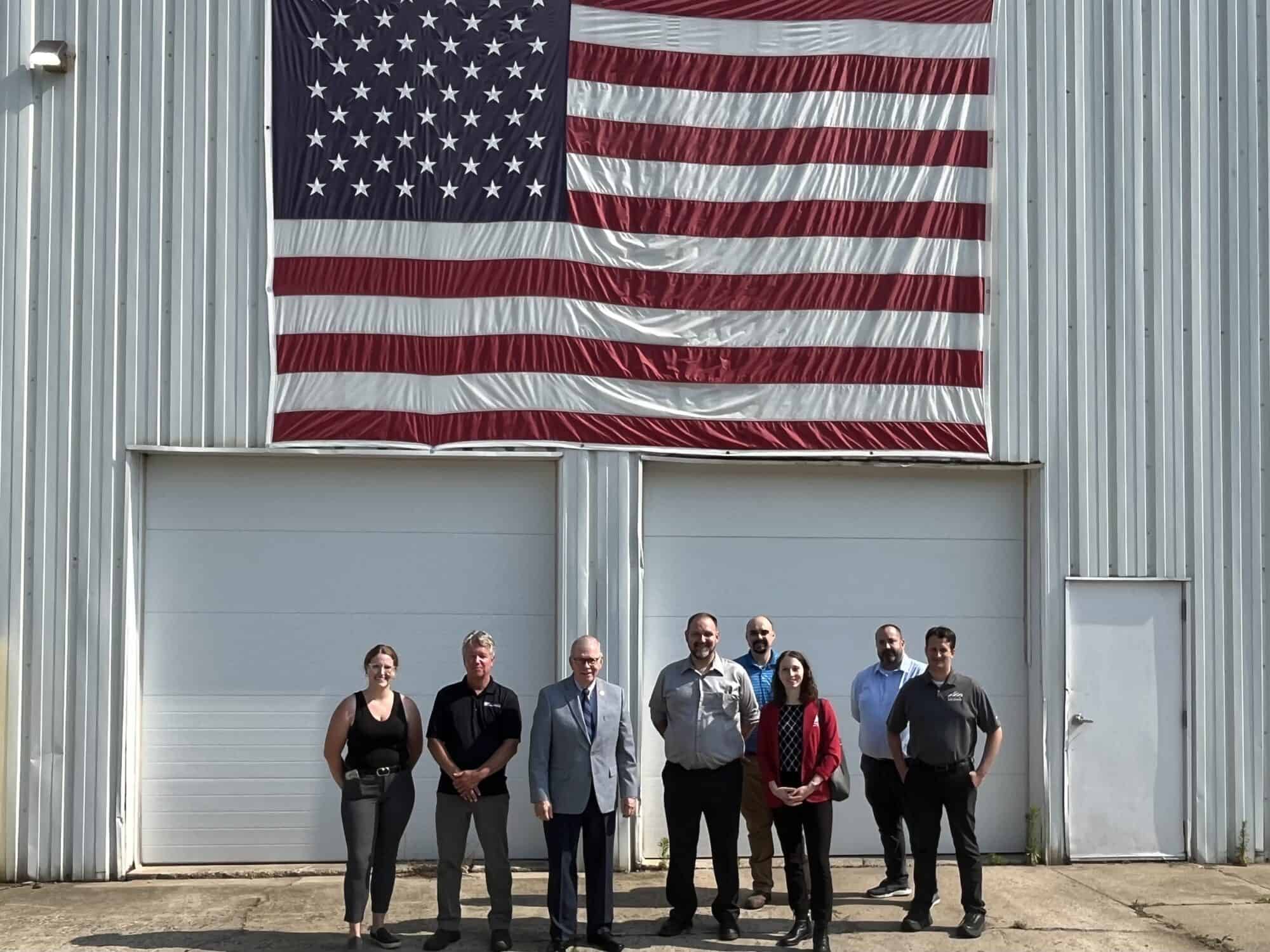
Rep. Tim Walberg (R-MI) recently visited Madsen Steel Wire Products in Bronson, Michigan, to discuss critical tax priorities with company leadership and members of the National Association of Manufacturers.
The visit, led by Madsen Steel Wire Products General Manager Steve Cochran, focused on the importance of maintaining a competitive tax code to support growth and innovation in the manufacturing sector in the face of scheduled expirations of key pro-manufacturing tax policies in 2025. The visit also underscored the essential role manufacturing plays in economic growth and stability.
The topline: During the tour, Rep. Walberg witnessed firsthand the impact of pro-growth tax policies on manufacturers.
- “Visiting Madsen Steel Wire Products reinforced the need for tax policy that supports manufacturing growth and job creation,” Walberg said. “We in Congress must act before the end of 2025 to preserve 2017 tax reform and avoid the devastating impacts to small manufacturers that will come to pass if these pro-growth policies are not preserved.”
A close-up view: Cochran shared the company’s experience with 2017 tax reform, highlighting how tax reform enabled significant investments in new equipment and workforce expansion.
- “Tax reform in 2017 was a game-changer for us; it allowed us to invest in our people and technology, driving our competitive edge,” said Cochran. “But the looming expiration of key tax reform provisions creates significant uncertainty for our future planning.”
- “In particular, we face a potential double-whammy as our tax rates are scheduled to increase next year at the same time the pass-through deduction expires—resulting in significant and damaging tax increases for us and other small manufacturers.”
An economic impact: The economic impact of manufacturing on local communities was a central theme of the discussion.
- “Manufacturers like Madsen Steel Wire Products are vital to communities like Bronson,” said Branch County Economic Growth Alliance Director Audrey Tappenden. “Their strength is critical to our local economy and broader industries.”
The big picture: Walberg and Cochran also discussed the broader economic impact of tax reform. The NAM’s recent survey found that 94% of manufacturers believe Congress should act before the end of 2025 to prevent tax increases. The survey also indicated that if tax increases take effect, 73% of manufacturers would limit capital investments and 65% would reduce job creation.
- “Manufacturing is the backbone of our local economy,” said Cochran. “Our ability to invest in new technologies and expand our workforce is dependent on preserving tax reform, which will directly translate to more jobs and better wages for our community.”
The bottom line: “The stakes are high,” said Walberg. “We need to ensure that the tax code continues to support the hardworking men and women in manufacturing. It’s about maintaining a level playing field and ensuring that manufacturers like Madsen Steel Wire Products can thrive—supporting small business growth and the economic health and prosperity of our communities.”
The takeaway: “The NAM launched ‘Manufacturing Wins ’ to preserve tax reform, and Rep. Walberg’s visit to Madsen Steel underscores the critical role of tax policy in driving the success of manufacturers in America,” said NAM Vice President of Domestic Policy Charles Crain. “Congress must act before the end of 2025 to prevent devastating tax increases—bolstering manufacturing across the country and supporting the economic stability and growth of local communities like Bronson, Michigan.”
In It for the Long Haul: C.H. Robinson Takes on Sustainability

It’s not every day that an international company meets an ambitious sustainability goal two years early. But last May, that’s exactly what happened at 119-year-old transportation logistics provider C.H. Robinson.
- The goal under discussion: a company-wide reduction in intensity of Scope 1 and 2 emissions—those emissions generated by the company’s own operations—of 47% (more than the 40% targeted). C.H. Robinson had previously calculated meeting the objective by 2025.
Simple but effective: “Most of it was looking at where we could find inefficiencies” and correcting them, said C.H. Robinson Vice President of Environment, Social and Governance Rachel Schwalbach. Some changes came from suggestions “our own employees brought forward: LED lighting, responsible use” of electricity.
- Efforts also included a marked increase in the company’s use of renewables generally. From 2019 to 2023, C.H. Robinson renewable-energy purchases rose 40%.
Not an either/or proposition: The Eden Prairie, Minnesota–based company—which solves logistics challenges for clients through freight forwarding and other innovative transportation solutions—is proof positive that businesses don’t have to choose between good environmental stewardship and profitability.
- In fact, “sometimes the sustainable option is actually the less expensive option,” Schwalbach told the NAM. “C.H. Robinson is working with suppliers every day to drive out waste, and often that’s been because we’ve looked at it through a lens of cost savings or time reduction. Now it’s also through the lens of sustainability.”
- What’s more, “if you’re approaching sustainability right, it should be tied to your overall business strategy. Sometimes it’s as simple as making sure you’re compliant with rules and regulations” as you meet sustainability requirements.
A competitive advantage: Reducing the footprint of operations can be a competitive advantage for manufacturers, too.
- “We get asked about sustainability by nearly all our stakeholders, so it really has to be a part of strategic decision making across the business,” Schwalbach continued. “Our shippers are also getting asked about [sustainability] by their investors and customers. People across the business are thinking about it, so it’s [to our advantage to] make sure it’s integrated across all areas.”
No business is an island: Businesses must keep in mind that sustainability is a shared interest, and the environment’s health is best served by teamwork, not isolated efforts, according to Schwalbach.
- “As companies continue to put big [sustainability] goals out there, I cannot emphasize enough the need for collaboration across industries, as clichéd as it sounds,” Schwalbach said. “Having people who are willing to come to the table and say, ‘Hey, let’s figure this out together,’ is going to be pretty critical.”
- For C.H. Robinson, that means engaging with customers, carriers and a broad range of other stakeholders.
Supporting climate-friendly practices: The right moves by policymakers can also help support the private sector’s sustainability efforts.
- “As we’re looking increasingly at alternative fuels and electric vehicles here in the U.S., we need an electric grid that can support the transition to a lower-carbon economy,” Schwalbach said. “Continuing to invest in [strengthening] the grid will help us invest in the right technologies. We need to be able to move forward quickly in a way that doesn’t cause disruption to the supply chain and transportation.”
- Companies want clarity around regulations, too. “There are so many [regulations] coming out right now, and companies want to know, ‘How do I get the right [climate-related] data? How do I make sure the data are accurate?’”
In for the long haul: So what’s next for C.H. Robinson? A continued focus on conservation, for one thing.
- “You meet your goals, and that’s really exciting, but there’s no time to sit around,” Schwalbach said, adding that the company is now in the process of figuring out “what new sustainability goals will look like for carbon reduction.”
- Ultimately, those goals will be met by ensuring a commitment to the environment remains a company-wide focus, she told us.
- “Doing sustainability well means it’s integrated. C.H. Robinson is a 119-year-old company, and sustainability is about making sure we’re going to be successful for another 119 years.”
